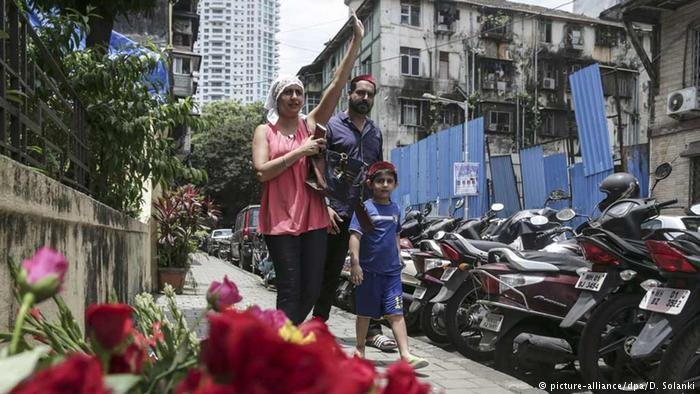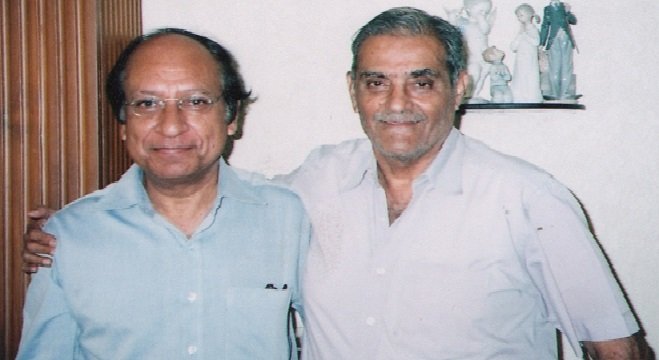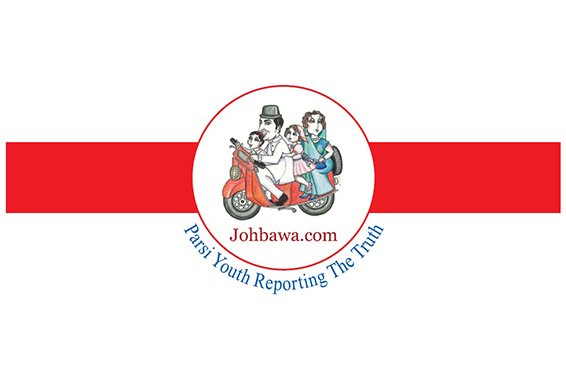India’s Zoroastrians fighting for survival
An Indian government initiative to preserve the minority Parsi community in Mumbai is showing signs of success. To reverse a shrinking birth rate, the project pays couples to have children. Murali Krishnan reports.
Four years ago, the Parsi community in Mumbai was facing extinction. In response, a fertility program called Jiyo Parsi (live Parsi) was launched by the Indian Ministry of Minority Affairs and the Parzor Foundation, an NGO.
Last month, the program celebrated the birth of its 101st baby and there is optimism that the Parsis will not fade away into history. The descendants of Iranian Zoroastrians, Parsis are a micro-minority in India with an official population estimated at around 61,000. The community traces its ancestry to Zoroastrian refugees who landed on the coast of the western Indian state of Gujarat around the 8th century.
Fleeing Islamic persecution in Persia, they integrated with local populations, while maintaining their distinctive ethnic identity.
Paying for procreation
“In the last four years, we have had 101 babies as opposed to 200 births over the last decade or more,” Dr. Shernaz Cama, founder and director of Parzor, told DW.
 This demographic bump is good news for the Parsi community. Their numbers have fallen by a tenth each decade since the 1950s. The last 2011 census put the number of Indian Parsis at 57,264, dropping from 114,000 in 1941.
This demographic bump is good news for the Parsi community. Their numbers have fallen by a tenth each decade since the 1950s. The last 2011 census put the number of Indian Parsis at 57,264, dropping from 114,000 in 1941.
“It’s a great feeling. We are proud parents of a seven-month old baby and the scheme has helped a lot – especially when we were initially reluctant to enroll ourselves,” Farhad Mist, an Indian Parsi, told DW.
The Parsi tradition of marrying only within the community resulted in large numbers of people remaining unmarried in the 70s and 80s. That was when the decline began. At that time, it was taboo to even think of marrying outside the community.
With an initial outlay of 1.3 million euros (100 million rupees), the Jiyo Parsi scheme focused on infertility treatment for Parsis at select hospitals by compensating for costs incurred by patients for medical tests and hospital bills. Besides in-vitro fertilization (IVF), a number of births took place naturally without medical intervention after couples were counseled on staying healthy and addressing issues like diabetes and thyroid disease.
In addition, bold advertisements were launched. One particular advert read, “Be responsible – don’t use a condom tonight,”
“Late marriage, reluctance to marry, health complications and an unwillingness to procreate were the major factors in precipitating the crisis within the community. But this initiative is helping,” Ahgar Billimoria, a corporate executive, told DW.
Other factors such as infertility issues and marriages outside the community have resulted in people no longer being classified as Parsi and contributed to the demographic decline.
 Can the Parsis flourish?
Can the Parsis flourish?
It remains to be seen if the initial flash of success in this ambitious scheme will see more enrolments.
“This initiative is good especially when the community is dwindling,” Nergish Mistry, an influential member of the Parsi community, told DW. “But the scheme does not include mixed marriage couples and that is unfortunate. A social dogma cannot be tuned into a religious principle.”
Others like Maja Daruwalla, executive director of the New Delhi-based Commonwealth Human Rights Initiative (CHRI), believes the Parsis are striving hard to preserve their heritage.
“We came as people expelled from their country of origin and have integrated,” Daruwalla told DW. “The Parsis have managed to keep their separate ethos and contributed immensely to society against all odds. I hope this scheme works well.”
The Parsi community counts itself as one of the most successful minority and migrant groups in the world. Today Parsi families such as Tata, Godrej and Wadia are among India’s top corporate dynasties.
Many Parsis have become successful and have contributed to charity. Hospitals, schools, libraries and streets of Mumbai and in other cities are frequently named after them.
Encouraged by the relative success of the program, backers are planning to launch the second leg of the campaign called “Joy of Family” later this week.
The second round will focus more on counselling and advocating people to have more children. Though a family has only one earning member and a large number of dependent family members to support, it should not deter them from having more children.
“More people are willing to come forward. Now couples want a second child. For a community caught in a cusp of living amongst big families and the predicaments of progress in India, this is indeed a big step,” said Shernaz Cama from Parzor.





